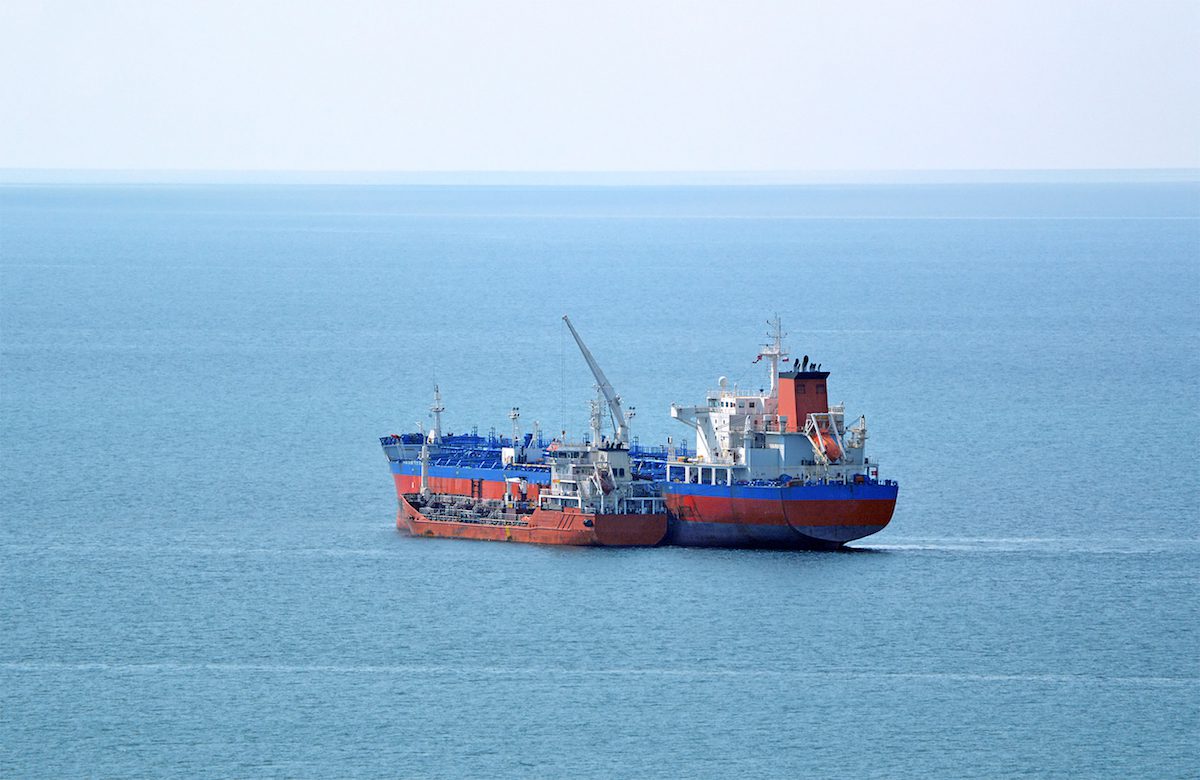FILE PHOTO: Alexander Zamaraev / Shutterstock.com
By Elizabeth Low (Bloomberg) –The shipping sector is providing an outlet for surplus oil products such as diesel that have swelled due to a virus-driven demand hit, but questions about changing ship fuel quality are starting to raise concerns.
Diesel and straight-run kerosene, which is usually processed into jet fuel, are increasingly being used to make very-low sulfur fuel oil for ships, helping to alleviate a glut of middle distillates. Routine sampling of VLSFO is showing that some blends are becoming less viscous, or thinner, which may affect the stability of the fuel, according to testers and industry consultants.
In the worst-case scenario, this could lead to the fuel turning into a sludge and overwhelming the ship’s engine, although there’s only a few instances of this happening, they said. The industry also faced quality issues as it transitioned to new rules encouraging cleaner-burning fuels that took effect this year.
VLSFO has been the fuel of choice for shippers as they adjust to the regulations known as IMO 2020 that mandated vessels burn fuel with no more than 0.5% sulfur unless fitted with pollution-reduction kits. The higher than usual volumes of diesel and kerosene that are making their way into ship fuel blends since the virus struck are now providing an additional challenge.
“The shipping industry is still attempting to get used to new low-sulfur fuel oil blends,” said Unni Einemo, director of the International Bunker Industry Association. “People are still trying to assess where the weak points are for the new fuels. IMO 2020 is not over.”
Detecting unstable fuel, however, is no easy task. A risky batch may only become apparent in the weeks following delivery, even after initially passing specification requirements, said Steve Bee, group commercial & business development director at fuel testing firm Veritas Petroleum Services. VLSFO should be used quickly and stored no longer than three months, he said, compared with marine gasoil that can be stored for as long as a year.
Stability becomes a concern when viscosity drops below 100 centistokes, said Tim Wilson, principal marine consultant engineer at Lloyd’s Register’s bunker fuel analysis unit. The average monthly viscosity of VLSFO varied in different regions through the first eight months of 2020, from as low as 52 to as high as 179, according to data compiled by Lloyd’s. Supplies in Fujairah were above 100, while in Singapore, it’s been below that level for most of the year.
Fuel quality issues following IMO 2020 may have already cost shippers more than $1 billion, according to Intertanko, a tanker association.
The narrowing gap between benchmark diesel prices in Singapore and 0.5% sulfur marine fuel means bigger volumes of the normally more expensive industrial fuel are likely to find their way into the shipping pool. The spread has narrowed about 88% since the end of June, according to S&P Global Platts.
“We don’t expect diesel to come out of its current slump anytime soon, while VLSFO fundamentals should remain relatively more constructive,” said Sandra Octavia, an oil analyst at Energy Aspects Ltd.
–With assistance from Ann Koh.
© 2020 Bloomberg L.P.

 Join The Club
Join The Club











